Bach's Used Auto
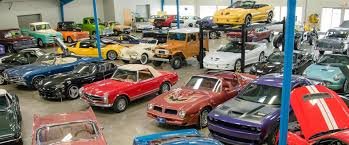
Project Overview
This project consists of 8 pages as follow:
- Pros and Cons
- Used Cars
- Special Deals
- Services and Parts
- Finance
- Research
- Available Inventory
- Contact Information
Used Car Pros and Cons
Advantages
Lower Prices
Used-car buyers can take advantage of rapid depreciation in the value of new cars to the tune of 20 percent in the first year and about 40 percent after three years. Lower average prices for preowned vehicles also provide a better chance of being able to pay for your purchase in cash, or making a larger down payment. You might get a higher-spec model than you could afford new, too.
Smaller Loan Amount
With lower prices, it’s no surprise that used cars have smaller average loan amounts than new ones. Depending on the terms of the loan, that could translate into lower monthly payments and a smaller total interest charge. Also, used cars can have quicker payoff, Used-car loans are usually shorter than those for new cars, enabling borrowers to pay off their vehicles sooner.
Disadvantages
Reliability
Despite improvements in quality, it stands to reason that preowned cars generally will be less reliable than brand new models. The older the car, the more money you may have to spend on repairs, especially if it is no longer covered by the automaker’s warranty. The driving behavior of previous owners plays a role in reliability, too, which is why a vehicle history report is important.
Rates may be higher
Interest rates tend to be higher for used cars. Partly, this is because of manufacturer incentives on new vehicles, but also because of the greater risk involved in used-car financing. Consumers with lower credit scores will often buy used, for example. Another reason is that used-car values are less predictable, which makes it harder for the lender to know how much money it can recoup if it needs to repossess and resell the vehicle.
The Importance of Used Cars
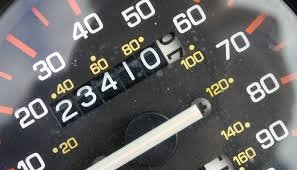

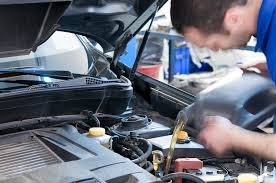
All cars on the road are used. At the moment a vehicle is driven off a dealer’s lot by a proud new owner, that vehicle becomes a used car. This document illustrates some key facts about the size, scope and economic impact of the used car industry in this country. There are more than 278 million vehicles on U.S. roads, and every one of them is used. But even if one were to consider the 17.1 million new vehicles retailed in 2017 as still “new,” the number of used vehicles on the road today still dwarfs the number of new.
Buying a Used Car From a Trusted Dealer Is Important If you wanted to buy a product, you would buy it from a retailer you trust. The same thing is true for buying used cars. You would never buy a car from a dealer you didn’t trust. That is why we strive to be a trusted name in used car sales, and why we think you need to understand the importance of buying used cars from a trusted dealer. We want our customers to be confident in dealing with us.
Buying from a trusted dealer is important because it allows customers to be able to buy without worrying that they are being scammed. They know that shopping with this dealer will mean they get a good vehicle for a great price. They know that the dealer won’t tell them a car runs great and has no problems if it actually needs a new transmission. They know that the dealer won’t tell them the car they want is only available at a hugely inflated price and instead will be willing to negotiate a fair price.
Special Deals
The best deal on a used vehicle comes down to finding the lowest interest rate. This April, that honor goes to Lexus, Lincoln and Chevrolet, which are the only automakers offering no-interest financing on any of their CPO vehicles.
That doesn’t mean the rest of the deals are bad, though. There’s a host of automakers offering finance rates under 1%. These include Subaru, Hyundai, and luxury automakers such as BMW, Jaguar, and Land Rover.
There’s considerable variance in the loan length of some of these CPO financing deals, which is something you’ll want to keep an eye on.
The vast majority of these finance offers run from three to five years, but there are some outliers. For example, Lincoln offers loans that last longer than five years on select models, while Jaguar and Land Rover offer two-year deals on some vehicles.
Services and Parts
Service
If you decide to get an expert’s help when you’re buying your next car, you still might need help choosing the right service for your needs. You might consider using a car-buying concierge, AutoNation Direct’s car-buying service or the car-buying services offered by AAA and discount clubs such as Costco. And finally, if you decide on a more traditional approach, you could use a car broker.
All of these services are beneficial for car shoppers whose time is tight. They all locate the cars and do the negotiating, which is the step most consumers hate. All the services offer a certain level of protection, keeping an unprepared car buyer from being thrown into the wheeling-and-dealing car buying arena, where buyers can lose money on the trade-in, financing and the purchase of unneeded aftermarket products — or a combination of all three.
A lot of today’s car shopping is done online and car parts are no different. However, there are some “dos and don’ts” when it comes to shopping for car parts on the web, just as there are when it comes to scoping out deals on cars.
This is where you are going to do your research, price comparisons, and preferably where you will be purchasing the car parts. So you need to get familiar with this vast amount of online information and understand the websites to consult and the websites to avoid.
Finance
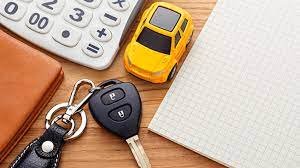
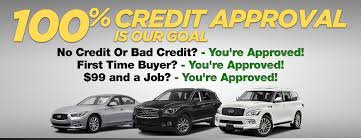
How Does Finance Work?
In the excitement of shopping for a used car, many shoppers think about financing last. Instead, you should get preapproved for an auto loan first. According to the credit bureau Experian, about 55% of used car buyers take out a car loan to pay for their cars. While the price of purchasing a used car can save you thousands of dollars compared to buying a new car, financing a used car can be more expensive. With preparation, persistence, and a bit of patience, however, you can get a great deal on an auto loan for your new-to-you vehicle.
We’ve put together a list of the steps you should take when getting a used car loan. They are similar to the steps new car buyers take, though there are some key differences. The most important tool you’ll have in getting a great deal on financing is knowledge: Knowing about your credit history, where to find financing, and how to apply for a car loan will put you ahead of the game before you approach a dealer or private party.
How to finance a used car?
1. Know Your Credit Score Before You Apply – Getting your credit score and knowing what’s in your credit score gives you an idea of the interest rate and loan term you can expect.
2. Research Lenders – Learn the difference between national banks, credit unions, community banks, and more for getting a used car loan.
3. Apply For a Used Car Loan – Follow these strategies to apply for a used car loan the right way.
4. Compare Different Used Car Financing Offers – Compare offers to arrive at the best financing option for you.
5. Shop at Used Car Dealers with Confidence – See what to expect when you go into the dealer to buy your used car.
6. Watch Out For Red Flags – Know which words and phrases are dangerous in the used car finance world.
Research
Are you in the market for a quality pre-owned car, truck, or SUV? Entering into a used car agreement can be nerve racking. This is especially the case when you are purchasing your pre-owned car from a private seller, rather than one of the reputable used car dealerships, or elsewhere around the United States.
Dozens of questions are likely to race through your mind. You will be asking yourself: How do I know I am getting a good deal? How do I know where the car has been, and what kind of condition it is truly in? How do I know that the buyer is being truthful with me regarding the health of the vehicle? What happens if I buy it and something goes wrong right away? Am I protected? These are all great questions to ask, and are just a few of the many that are likely to keep you up at night.
The answer to this core question is not one that most people want to hear. When purchasing a used car from a private seller, the answer is quite simply – you don’t. You will never completely know the answers to all of your questions. If you get lucky, the seller you are buying from is an honest and ethical person, and has no agenda aside from selling you their pre-owned car. If you aren’t one of the lucky ones, then you may end up with a vehicle that is far from what you expected, leaving you stuck with years of maintenance, and the bills that go along with it.
Available Inventory
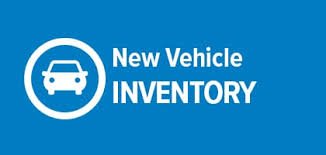
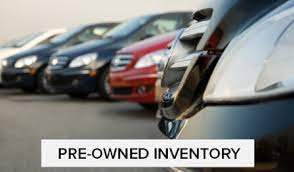
A vehicle inventory management checklist will help you create flawless listings and stand out from the thousands of other dealerships online. The vehicle inventory management process starts as soon as the dealership manager prints off a bill of sale for a new unit. The vehicle gets a stock number, tags and folders, and then gets entered into the DMS. Because the DMS is where third-party sites and CRM tools pull their information, the accuracy of this stage is essential, but frequently overlooked.
Save valuable time and paper with a little quality control. Think of how many documents you print using the information entered when you first stock a vehicle. Now, think of how many forms have to be reprinted every day because of discrepancies. A quick audit only takes ten minutes, and it can improve overall dealership efficiency and save resources, too. A checklist can guarantee your vehicle inventory manager doesn’t miss crucial data that can help your dealership show up during a car buyer’s research.
Include the basics:
1. Stock Number,
2. New or Used: Your DMS may automatically populate a new or used tag once you enter the VIN. This information is not always accurate, so be sure to verify it’s correct before you hit save.
3. Year.
4. Vehicle inventory management
5. Make.
6. Model.
7. Body style: Body style is a typical search filter, make sure to include it in every listing.
8. Correct VIN: Your DMS will most likely catch an incorrect VIN, but there’s always room for error with data entry. Always check the entire VIN before you save your listing.
9. Mileage: Never list an estimated vehicle mileage and update the vehicle listing when the vehicle arrives on site. Even-numbered mileage readings stand out like a sore thumb to auditors, and they’re misleading to clients.
10. Color: Forget fancy names like Radiant Cherry or Platinum Ice. Keep it simple and use basic color names like red or white.
11. Photos: Vehicle images can attract car buyers or turn them away. Make sure whoever’s in charge of your dealership’s photos is appropriately trained in automotive photography.